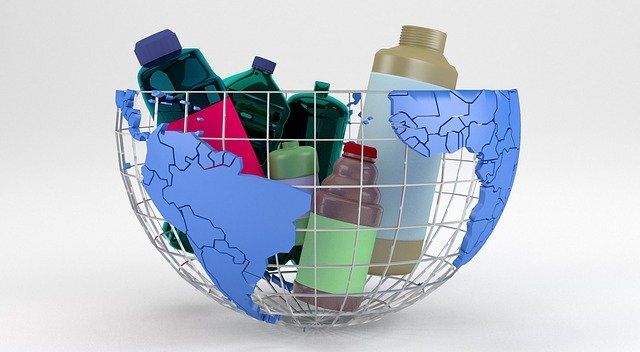Crucial to the success of making the plastics industry sustainable, is the public’s understanding that something has to change.
The images of plastic strewn beaches and dead sea birds filled with plastic, or headlines informing us of the horrors of microplastics in our drinking water and huge islands of floating plastic waste in our oceans naturally draws an emotive response.
Yet trying to avoid using plastic is incredibly difficult for the wider public. Fortunately, today the issue is now a political cornerstone, with a majority of politicians aware that government policies need to change. This has led to some ground-breaking public commitments, such as the 2015 Paris Accord, the EU Green Deal, Australia’s carbon taxes, and China’s ‘Blue Skies Policy’.

This is the second of a two-part feature on the viability of chemical recycling, follow the link to read, Chemical Recycling: A Solution or a Dream for Plastic Waste Part 1
However, while these general policies will improve overall environmental guardianship, making chemical recycling financially successful is still the priority for the plastics industry.
Some believe that the best way to achieve this is to learn from the progress made in the energy sector. While only twenty years ago, the idea of switching entire economies to wind, wave, and solar power seemed near impossible, today many countries are meeting much of their electrical demand from these sources.
For example, Norway has 98% of its power from non-fossil fuels (mostly hydroelectric), Kenya produces 70% of energy from renewable sources, and even the USA has 18% from sustainable power.

Can the Chemical Industry Learn Sustainability from the Energy Sector?
Yes, according to a recent report by consultants at Wood Mackenzie which states that, “On the materials side, we’re seeing the start of a similar shift [to the energy sector] in the political and regulatory landscape. Measures vary, but the direction of travel is the same. China implemented a ban on several types of waste imports in 2018, with a significant impact on the global recycling industry. [While] The European Commission launched a Circular Economy Action Plan in March 2020, which provides a framework to reduce material intensity and support new business models across sectors as diverse as packaging, apparel, construction and food.”
In the same way that the energy sector has been boosted by improved solar panels, investment into wind farms, and the smart application of technology, so too must raw material suppliers react to the need for sustainability through R&D.

As the Wood Mackenzie report notes, “Technology will drive the materials transition. Products are being redesigned to reduce their materials impact – light-weighting is a key strategy in the automotive industry, for example, and in packaging we’re seeing brand innovation on both sides of the paper versus plastic debate. New materials, including a wide range of bio-sourced and bio-degradable plastics, are being developed and commercialised. Big data and AI are being deployed to increase material efficiency, and waste management technology is evolving too.”
Concluding that, “Materials-consuming industries can take a great deal of inspiration from the energy industry’s experience. For one thing, the transformation underway shows that systemic change is possible.”
But this still leaves a big question mark over chemical recycling, which for now, is still in its infancy. Advanced plastic recycling still has a long way to go before it can be anywhere near matching the scale of the plastic waste problem.
This was made clear by analysis of the current state of the chemical recycling industry and the technology it employs in a report commissioned by the charity Chem Trust. Their study, conducted by industry consultants at Eunomia, found that, “[While] there is evidence to indicate that at least some technologies have promise, important details around mass flows, chemical use and the viability of the processes in real-life waste management circumstances are largely incomplete.”

Finding that, “Throughout this report the overriding finding is that there is a general lack of transparency or robust evidence base that can be used to verify claims or generate firm conclusions around the viability of many technologies.”
This led Chem Trust’s Executive Director, Dr Michael Warhurst, to conclude that, “In the context of a clean and safe circular economy, as advocated by CHEM Trust, it appears that chemical recycling is being oversold. Decontamination of the recycling stream with these technologies requires extensive sorting and pre-treatment, and high energy input. The end result may still be contaminated with hazardous chemicals, and the economic viability of many of these technologies is in doubt.”
Chemical recycling may be the perfect solution, but without a lot more work it will remain a dream.
In fact, with the UN reporting that more than 300 million tonnes of plastic is being produced each year (including one million plastic drinking bottles every minute and 5 trillion single-use plastic bags every year), the chemicals and plastics industry need to do some long hard thinking and make some huge investments if they want to be serious about chemical recycling.
Photo credit: Yi Liu on Unsplash, 大爷 您 on Unsplash, 3D Animation Production Company from Pixabay, Nick Fewings on Unsplash, Sasha Pestano, Flavio Takemoto from FreeImages, Ksenia Chernaya, Ivan Philipov, Cheryl Empey, & Loïc Manegarium